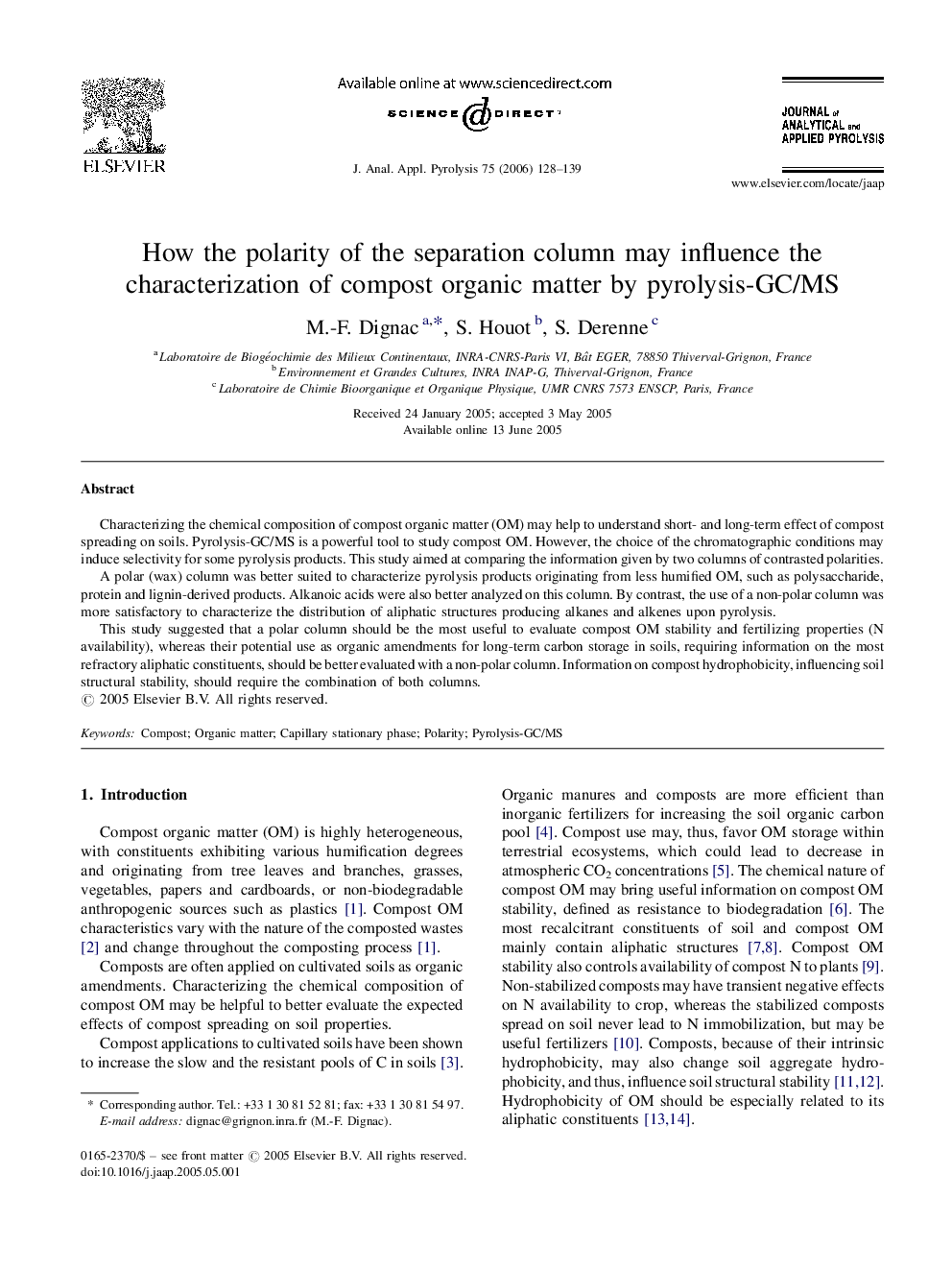| Article ID | Journal | Published Year | Pages | File Type |
|---|---|---|---|---|
| 1198053 | Journal of Analytical and Applied Pyrolysis | 2006 | 12 Pages |
Characterizing the chemical composition of compost organic matter (OM) may help to understand short- and long-term effect of compost spreading on soils. Pyrolysis-GC/MS is a powerful tool to study compost OM. However, the choice of the chromatographic conditions may induce selectivity for some pyrolysis products. This study aimed at comparing the information given by two columns of contrasted polarities.A polar (wax) column was better suited to characterize pyrolysis products originating from less humified OM, such as polysaccharide, protein and lignin-derived products. Alkanoic acids were also better analyzed on this column. By contrast, the use of a non-polar column was more satisfactory to characterize the distribution of aliphatic structures producing alkanes and alkenes upon pyrolysis.This study suggested that a polar column should be the most useful to evaluate compost OM stability and fertilizing properties (N availability), whereas their potential use as organic amendments for long-term carbon storage in soils, requiring information on the most refractory aliphatic constituents, should be better evaluated with a non-polar column. Information on compost hydrophobicity, influencing soil structural stability, should require the combination of both columns.
